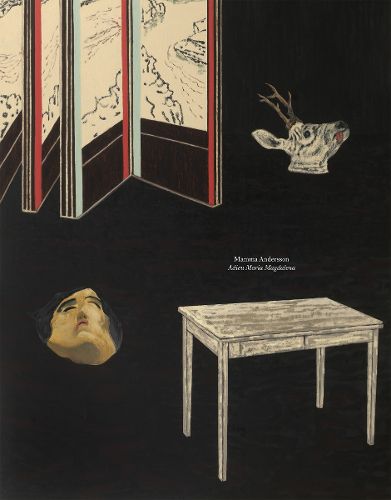Readings Newsletter
Become a Readings Member to make your shopping experience even easier.
Sign in or sign up for free!
You’re not far away from qualifying for FREE standard shipping within Australia
You’ve qualified for FREE standard shipping within Australia
The cart is loading…






Adieu Maria Magdalena considers recurring themes and motifs from Mamma Andersson's oeuvre and suggests complex and potent feelings related to loss.
Finding inspiration in work by other Scandinavian painters, including Carl Fredrik Hill and Vilhelm Hammershoi, Andersson explores the tension between interiority and the external world, imbuing her compositions with a haunting stillness and introspection. Departing from earlier oil-on-board paintings, the paintings in this body of work primarily utilize canvas, a support that allows Andersson to create at a larger scale and expand compositional possibilities within the pictorial space. Employing trompe l'oeil, the artist produces a subtly claustrophobic effect in domestic spaces by layering uncanny interior scenes taken from her own home and her imagination, an interplay of surfaces and imagery that probes the nature of representation.
This catalogue, published on the occasion of the artist's first solo exhibition in Paris, at David Zwirner, and a companion to three other volumes of recent work, marks a metaphorical farewell to a previous phase in her life. The author Karl Ove Knausgaard, a frequent collaborator of Andersson's, provides an accompanying text, offering an oneiric perspective on the artist's evocation of layered dimensions.
$9.00 standard shipping within Australia
FREE standard shipping within Australia for orders over $100.00
Express & International shipping calculated at checkout
Adieu Maria Magdalena considers recurring themes and motifs from Mamma Andersson's oeuvre and suggests complex and potent feelings related to loss.
Finding inspiration in work by other Scandinavian painters, including Carl Fredrik Hill and Vilhelm Hammershoi, Andersson explores the tension between interiority and the external world, imbuing her compositions with a haunting stillness and introspection. Departing from earlier oil-on-board paintings, the paintings in this body of work primarily utilize canvas, a support that allows Andersson to create at a larger scale and expand compositional possibilities within the pictorial space. Employing trompe l'oeil, the artist produces a subtly claustrophobic effect in domestic spaces by layering uncanny interior scenes taken from her own home and her imagination, an interplay of surfaces and imagery that probes the nature of representation.
This catalogue, published on the occasion of the artist's first solo exhibition in Paris, at David Zwirner, and a companion to three other volumes of recent work, marks a metaphorical farewell to a previous phase in her life. The author Karl Ove Knausgaard, a frequent collaborator of Andersson's, provides an accompanying text, offering an oneiric perspective on the artist's evocation of layered dimensions.